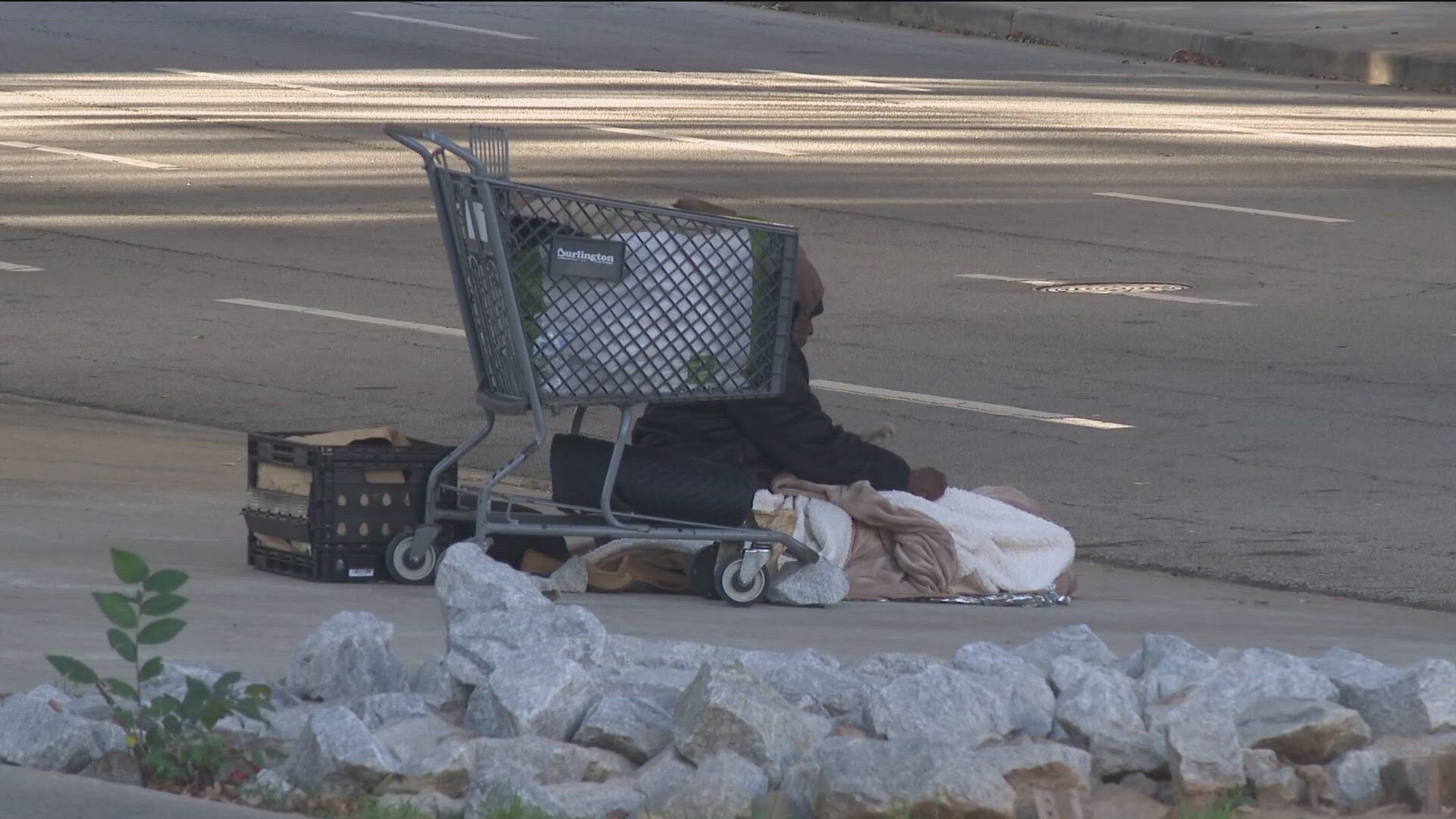FULTON COUNTY, Ga. — Overnight in Fulton County, volunteers and others with the outreach center are coming together to count those who are experiencing homelessness.
This annual count is mandated by the U.S. Department of Housing and Urban Development and provides a comprehensive "snapshot" of homelessness to help policymakers and funders in understanding the scope, scale, and demographic characteristics of individuals experiencing homelessness.
"As we enter our warm homes, (it's important) that we do not forget that there is a substantial population of people who are homeless," Dawn Butler, Fulton County Homeless Division Manager, said.
On Tuesday night, the north region of Fulton County was canvassed, and the team plans to cover the south side on Wednesday. The team is responsible for counting how many people are out on the street without a home on a single night.
"The purpose is to get a snapshot and to utilize that snapshot to plan our work, you know, what is needed as it relates to our homeless population," Butler said.
The first two nights are focused specifically on the unsheltered population, which Butler defines as someone living in a homeless encampment "in a car or a van. There may be people walking or people sleeping under a bus, a bus bench."
"There are many, many reasons why people are homeless, and it's not just because they want to be homeless, is because sometimes life circumstances," Butler said.
The sheltered count, according to Butler, paints a better picture of who is without housing in the county, given the impact environmental factors can have on the unsheltered data. Sheltered populations include those who are sleeping in emergency shelters, motels and transitional housing.
"If it's raining and cold, all those years there's typically a dip," Butler said, adding,
"But the data for the shelter count, that has gone up the last three years."
In 2023's Point-in-Time count, there were 209 people in sheltered locations compared to 172 in 2022. And though the task is federally required, Butler said helping those without permanent housing and bringing the community together is at the core of the count.
"Over the course of the year, it doesn't stop with a point in time - it's going back to those encampments, creating those relationships, providing additional resources, and doing our best to move those individuals from homelessness to shelter," Butler said.
Once the count is complete, the county and other localities will hand over the data to help Congress decide on federal funding as it relates to those experiencing homelessness.
"These are, you know, our brothers and sisters, that need help, and we want to help," Butler said.

